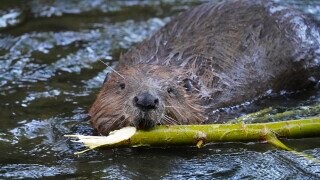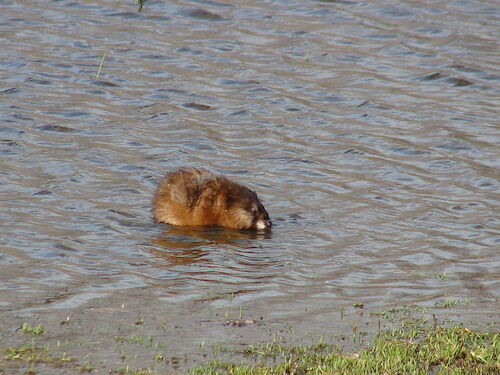How 200,000 Beavers Took Over Part Of Argentina

In their natural habitat in North America, beavers do a lot of environmental good. Outside of their natural habitat, though, they can use their massive teeth and engineering prowess for destruction. This is a lesson that Argentina has learned the hard way.
Beavers aren't native to Argentina, but in 1946, officials decided that beavers should be there anyway. They were going to boost the fur trade in Argentina, and they chose to do this by bringing in 20 beavers (10 pairs) to Tierra del Fuego, an archipelago in South America's southern tip. There were initially some concerns that this would not be enough because hunters would kill beavers faster than they could reproduce. This turned out to be wrong.
Instead, the Argentinian fur trade never took off, but the beaver population sure did. At least 100,000 beavers occupied the islands of Tierra del Fuego, and some estimates say there were up to 200,000 of the giant rodents. Nothing in Argentina was in place to keep the population under control. No one was hunting them, and natural predators didn't live in the region. The 200,000 beavers migrated and occupied islands in Tierra del Fuego. Some even crossed the border into Chilean territory. The beaver invasion was real, and Argentina knew that they needed to fight back.
Don't Miss
While the idea of a country threatened by an adorable, industrious rodent is hilarious (don't lie, you know it is), the beavers are anything but a joke, as their actions can only be described as ecological warfare. Naturally, a colony of beavers released in a forest would start to chomp trees, gather wood, and make dams. This has created a few separate issues.
First, the flora in Argentina is not meant for beavers. In areas where beavers are native, trees are surprisingly resilient to beaver damage and can recover. This is not true for the trees in Tierra del Fuego. Also, the dams created by beavers can have severe effects on the ecosystem of the forest, turning areas into bogs -- drastically affecting what can grow.

Effects of the beaver invasion were seen as early as the 1990s, but it was not until the 2010s that Argentina came to an ultimatum. They were going to exterminate the beaver population. Yes, in the grand tradition of unsuccessful wars against wildlife, Argentina was ready to kill more than 100,000 beavers to save their environment.
A test program was conducted beginning in October 2016 that tasked 10 hunters known as "restorers" with combating beavers in one specific area within Tierra del Fuego to show how a massive culling could be done. They killed 197 beavers with steel traps and shot an additional seven; hardly a dent in the 200,000, but it was a start. Or so they believed.
While they assumed that they had cleared all beavers from the test area, footage of the area showed that beavers from elsewhere had moved in. The whole exercise showed just how impractical it would be to try and hunt down every beaver. The terrains of Tierra del Fuego are difficult for hunters to navigate, making hunting at a large scale a challenge. Even if one island was completely cleared of beavers, any rodents hidden on other islands could repopulate the region once again.
Plus, for the average person, there was no reason to join in on the beaver hunt. Despite their destructive nature, some people simply think beavers are too cute to kill. When bounties were placed on beavers, the amount was not enough to sway anyone in Argentina into becoming a beaver hunter. Even unconventional approaches like trying to turn beaver meat into a delicacy proved to be unsuccessful, as it turns out that beaver meat is unpopular. Go figure.
To this day, the beavers continue to roam their occupied territory. They build their dams and level forests, all while laughing at the foolish humans who cannot defeat them like some annoying cartoon character.
Top Image: Ralf82/Pixabay